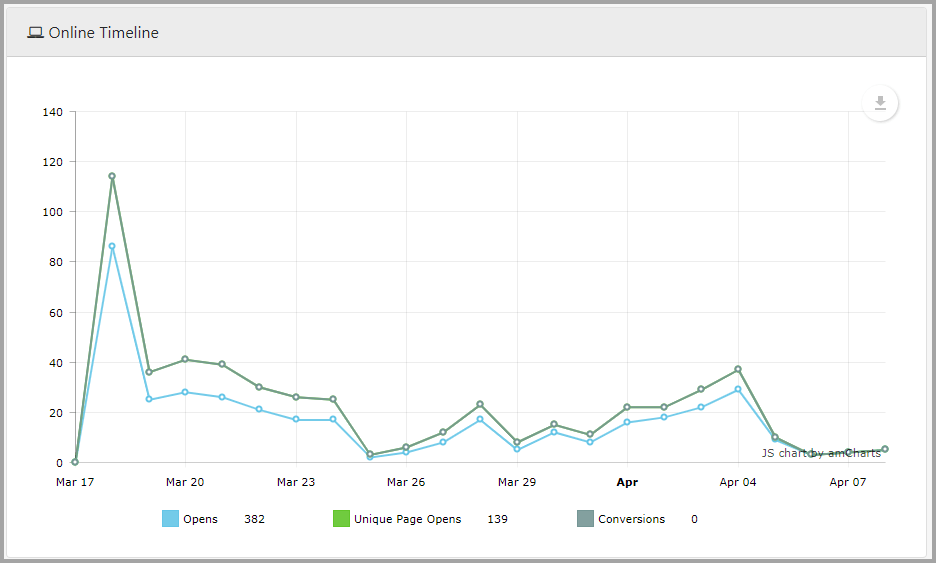Marketers have learned that the best way to influence buying decisions is to promote and advertise with multiple online and offline channels. This omnichannel focus has led marketers to be on the constant lookout for the best analytics tools for marketing in each of their primary channels.

It is just a fact of life that customers live their lives and engage with friends and family through multiple channels. It’s not even something that they think about. They shoot an email to a colleague, text a friend, and then hop on Facebook Messenger to participate in their group chat. It makes sense that they would want brands that they care about to do the same.
- 87% of retailers think that an omnichannel marketing strategy is critical to their success.
- 86% of senior-level marketers agree that it’s important to create a cohesive customer journey across all touchpoints and channels
- 52% of marketers use 3 to 4 marketing channels as compared to 44% in 2015
In other words — if your brand isn’t using an omnichannel or multichannel approach, you are likely being left in the dust.
The more channels that you can utilize to connect with your customers the better. Of course, you don’t want to overload your customers with multiple messages daily on different platforms. But a consistent drip-feed of messaging through social channels, email, direct mail, advertisng, text message, etc. — can have a big impact on your company remaining top of mind and building true rapport with your customers.
Top Analytics Tools For Marketing With Multiple Channels
In this article, we will examine some of the top analytics tools for marketing in the omnichannel age. Ensuring that you can not only deliver messages through multiple channels but also evaluate the effectiveness of those channels and ensure that you are hitting key performance indicator goals that you have set, will ultimately determine which channels are a good investment for your company.
Companies that are taking a full multi-channel approach to market to their customers should look into the following software options for evaluating the effectiveness of specific channels, and gauging customer interest at large.
1. Mixpanel – Event-Based Analytics Tool for Subscription Marketing
Source: Segment
Mixpanel is it complete multi-channel analytics Suite that helps companies to measure what matters most to them.
Mixpanel offers a powerful self-serve analytics solution that integrates directly with many channels and platforms, allowing you to easily analyze how and why your visitors engage, convert, and are retained by your company. One of the biggest selling points of Mixpanel is that the data is updated in real-time across all devices.
When you are engaging with your customers through multiple different channels, you want to ensure that you have an accurate picture of how each individual channel is performing. In seeing how your customers are using your website and backend dashboard, you can identify gaps in user experience that could be improved upon.
Where Mixpanel shines is in its deep reporting features. Designed primarily for software-as-a-service (SaaS) companies, Mixpanel allows you to go beneath the surface and learn more about which of your features are popular, what your power users are doing on your platform, and what usage and features are tied to long-term customer retention.
Mixpanel helps you identify exactly where your users are disengaging. For instance, maybe customers that are looking for a specific feature are having trouble finding it, causing a large number of free trial users to never upgrade their plan. This would become apparent using Mixpanel but would be likely to be missed with a simpler omnichannel analytics tool.
For subscription businesses, you’ll be hard-pressed to find an omnichannel analytics solution that delivers more insights and power than Mixpanel.
2. Databox – Data Collection and Reporting
Source: Weidert Group
Databox is an omnichannel analytics tool that helps business is to build powerful KPI dashboards. By gathering all of your metrics in one singular location, you can evaluate how your business is performing across all of your targeted channels.
Databox makes it easy to monitor the marketing and sales activities within your business, and measure the ROI of your activities across many different channels and platforms, by pulling all of your important data into one simple to use dashboard.
Databox allows you to build specific dashboards for different job titles within your company. Your marketing team could get one dashboard, while your sales team get another. You can ensure that your teams always have access to relevant business data that helps them to not only analyze their activities but identify gaps in their strategies and approaches.
Databox helps companies to build visually appealing, highly customizable dashboards using data from virtually anywhere. Databox dashboards are updated in near real-time, so you can be certain that you always have the latest data on hand when making decisions.
Some of the different dashboard integrations that can be plugged into Databox include:
- Google Analytics
- HubSpot
- ActiveCampaign
- Sharpspring
- MailChimp
- Shopify
- WooCommerce
- Many More
In total, Databox offers more than 70 Integrations that can be imported and set up with just a single click.
Because databox caters to so many different channels and platforms, that makes it an ideal solution for companies that are prioritizing a multi-channel approach.
3. Postalytics – Best Analytics Tool For Direct Mail Marketing
Postalytics is a full-service direct mail automation marketing platform that integrates with your marketing tech stack and generates personalized mailers that are printed, mailed and tracked for you.
Traditionally, direct mail has been very hard for marketers to develop detailed analysis on. Postalytics has changed the game by printing a unique “Intelligent Mail Barcode” on each mailer that is sent. You also get free personalized URLs and personalized QR Codes that track the online response of each recipient.
Most huge direct mailers employ teams of people that capture this information in spreadsheets, months after the campaign has finished. With Postalytics, this detailed analysis is available in all plans, including the Free plan. There’s no other analytics tool for direct mail marketing like it.
This rich, recipient level data is provided in detailed campaign dashboards that give you up to the minute information about what’s happening in your campaign.

When it comes to expanding the channels that you engage with customers through, automated direct mail marketing is an obvious choice. It gives multi-channel campaigns the high ROI of direct mail, with the speed, integration and analytics of email.
56% of respondents say receiving mail is a “real pleasure” in a recent report from USPS.
Business people receive over 120 emails per day. The average Gmail contains more than 8,000 messages. Sales teams are sending cold emails out to prospects all day every day. Standing out as hard.
Using Postalytics, you have complete control over your direct mail marketing campaigns and can connect directly to digital marketing automation platforms and CRMs. Because of the detailed delivery and response data available, recipient level engagement with your direct mail campaigns can trigger other touchpoints and automations in those platforms.
Postalytics makes this entire process simple, so that a single marketer can do the work of a team required to produce traditional direct mail campaigns.
Every Postalytics account gives you access to professional direct mail marketing templates. These templates can be edited and “proofed” using the drag-and-drop direct mail editor and stored in a library of approved and draft templates. These tools help cut days and weeks out of the traditional process of sending drafts to the printer, merging with data, printing, shipping, etc. just to land on the final design.
Triggered direct mail is a new concept that enables you to use automation tools to trigger direct mail to go along with your triggered email and digital campaigns. Triggered direct mail campaigns are often added to provide a physical touchpoint to existing workflows.
Postalytics also takes care of the printing and mailing. It has assembled a network of print and mail partners that process millions of mailers each month. This volume gives you the ability to send highly personalized mailers out in quantities as small as one postcard or letter!
4. Crazy Egg – Heatmaps
Source: Startup Stash
Few analytics tools for marketing give you a deeper and more fully fleshed-out dashboard integrations. picture of how your visitors are using your website than heatmaps.
Heatmaps allow you to look at your customer data in aggregate and see where your visitors are spending their most time reading and engaging with your website. For instance, a heat map can tell you whether a particular call to action is working, whether the copy on your website is being engaged with, and where your copywriting and design could be improved to increase engagement from your visitors.
With CrazyEgg, you can take recordings of the actions that visitors take once they reach your website. You can see every hover, mouse click, and pause as they read and engage with your page. This delivers insights into how your customers use your website, allowing you to optimize their experience and improve performance over time.
For companies that are employing an omnichannel approach, Crazy Egg is the perfect solution. Not only does Crazy Egg monitor what visitors are doing on your website, but also where those visitors have come from. You might find that visitors from one traffic source or channel behave much differently than visitors from another channel and make changes accordingly.
5. Google Analytics – Website Analytics
Source: NeilPatel
No list of top marketing analytics tools would be complete without Google Analytics. You can’t go wrong with the tried-and-true solution. Google Analytics delivers free web analytics that helps companies to analyze their website traffic.
Ultimately, Google Analytics is only able to track information about your visitors once they reach your website. For instance, it can’t provide insights into your newsletter or direct mail campaigns, but often the call to action on those campaigns is sending visitors back to your website anyway.
Your website is a central hub for all of the different advertising and marketing channels that your business utilizes. Understanding how that traffic is interacting with your website is critical for optimizing each channel individually and better understanding how traffic from each channel performs.
Google Analytics is the most popular analytics software on the market. There are more than 50 million websites currently using it today and for good reason — it’s a tried-and-true, reliable solution that works well. It makes an ideal solution for many companies because there is a lot of documentation and articles written about the different features inside of Google Analytics, ensuring that your team can always find the resources that they need to make the most of your analytics tool.
6. Google Search Console – SEO
Source: Google
There are many different SEO keyword tools on the market today. These tools help you to identify what customers in your market are searching for so that you can craft landing pages and content that ranks for those keywords.
But the one thing that many businesses don’t realize is the fact that the data inside of those tools is an estimate at best.
None of those keyword tools plug directly into Google, and Google does not publish search volume levels for their most critical keywords publicly, outside of the fast and loose estimations that they make available in the Google AdWords planner for PPC campaigns.
Ultimately, SEO is a channel that lends itself well to an omnichannel experience. Maybe a customer receives an email from you, sees one of your ads, receives a text message from your company, or hears about you from a friend — they are still likely to Google your company to learn more.
And the only analytics tool for SEO marketing that publishes verified data that you can use to inform the decisions that your company makes regarding organic search is Google Search Console. There, Google will provide some information about the keywords that searchers are using to access your website, how many impressions those keywords are delivering in the Google search results pages, and how many users are clicking through to your website once they see your listing.
In the end, a well-rounded approach to SEO marketing analytics is part of a broader omnichannel strategy for staying top-of-mind and growing your brand.
7. Optimizely – Landing Pages
No matter where your customers learn about your business from, they ultimately end up on a landing page at one point or another.
Maybe that landing page is attempting to get them to buy a product, and through their email or other information, or simply download a resource.
And when you get enough traffic, improving your conversion rate on these landing pages can be a lever for growth.
This is exactly what Optimizely brings to the table. Optimizely is an analytics tool for marketing that focuses on A/B split testing for landing pages. It enables you to evaluate how your landing pages are converting and optimize them over time by testing out different versions of the page.
Whether you send out an email campaign, direct mail campaign, advertisement, or rank in search engine results pages — you need to make sure that you are converting as many visitors to customers as possible.
The Best Omnichannel Analytics Tools For Marketing
Smart Companies are taking an omnichannel approach when engaging with their customers. It’s what customers expect and want from the brands that they engage with. But with more channels comes added complexity in analysis, and companies need to make sure that they can assess and track their efforts across the different channels that they use.
To do this, companies should look to invest in the best omnichannel analytics tools available on the market today.
The tools listed in this article should give any company that prioritizes multi-channel marketing campaigns a leg up over the competition. These tools allow you to better evaluate the effectiveness of campaigns across all of the different channels that you use while optimizing as you go.
About the Author

Dennis Kelly
Dennis Kelly is CEO and co-founder of Postalytics, the leading direct mail automation platform for marketers to build, deploy and manage direct mail marketing campaigns. Postalytics is Dennis’ 6th startup. He has been involved in starting and growing early-stage technology ventures for over 30 years and has held senior management roles at a diverse set of large technology firms including Computer Associates, Palm Inc. and Achieve Healthcare Information Systems.
